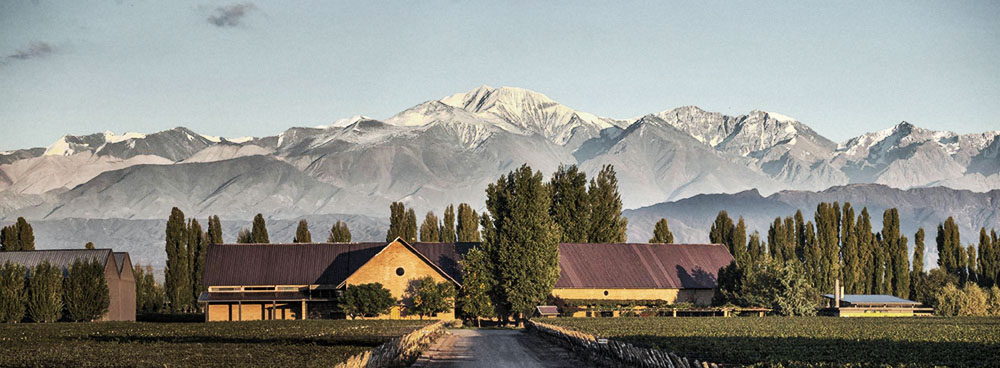Having proven that it can make world-class red wines from a rather inconspicuous grape variety as well as from more well-known vines, Argentina’s final vinous conquest will be turning oenophiles onto the county’s equally excellent white (and rosé) wines.
Susana Balbo, of the eponymous winery, is a firm believer in Argentina’s white wine potential. In fact, 40 percent of her winery’s exports consist of white and rosé wines, compared to the industry average of 20 percent.
“I think Argentina is missing a big opportunity [with white wines] due to the lack of wineries that take the risk to produce high-quality white wines,” she observes. “Probably, one of the reasons is the need for advanced technology that allows the production of … white wines with a great ageing potential.”
Elegant white wines with the capacity to age gracefully is what Balbo is shooting for. She’s also strongly focused on promoting Argentina’s indigenous Torrontés variety.
“Torrontés is a magnificent variety, with a high oenological value and [versatility] to obtain different wine types,” she explains. “In our case, we produce low alcohol wines, natural sweet wines, dry wines, barrel fermented wines, and late harvest wines from Torrontés grapes. Due to its great aromatic richness and its adaptability to diverse types of climate, Torrontés provides an interesting range of aromas that makes each wine unique.”
In spite of Balbo’s enthusiasm, Torrontés wines aren’t exactly easy to find. A recent Ontario promotion of wines from Argentina turned the spotlight on 40 or so of the county’s products available in that market. There was only one 100 percent Torrontés (Balbo’s, not surprisingly). However, this likely has more to do with the provincial liquor board’s buying strategy, (i.e. people – including our buyers – don’t know Torrontés means people don’t want Torrontés means we won’t buy Torrontés) than an actual dearth of Torrontés-based wines. Hopefully, with ongoing educational efforts by Wines of Argentina, and enthusiastic winemakers like Balbo, this situation will change.

Tasting Argentina’s whites & rosés
Susana Balbo Signature White Blend 2018
This fragrant white wine blends equal measures of Sémillon and Sauvignon Blanc, rounded out with Torrontés sourced from high altitude vineyards. Lots of floral, rose petal, vinous aromas that lead to balanced, intense, floral/lychee/mineral flavours. Very distinctive and tasty.
Crios Torrontés 2019
A blend of grapes sourced from the Cafayate and Valle de Uco regions. Redolent of passion fruit, rosewater, grapefruit and flower blossom on the nose; fresh, crisp, lively citrus and tropical fruit flavours. A textbook Torrontés that admirably shows of this grape’s potential.
La Mascota Rosé 2019
Expect to find bight cherry, raspberry and strawberry fruit on the nose of this 100 percent Malbec rosé. Crisp and clean in the mouth, with fresh berry and mildly spicy flavours. Very well-structured and balanced, with a long, elegant finish.
El Enemigo Chardonnay 2017
Crafted from 100 percent Chardonnay, this rich, creamy, mouth-filling, toasty, tropical fruit-laced white is aged in 500 litre French oak barrel for nine months under layer of flor - a naturally occurring yeast layer most often talked about in conjunction with sherry production. The result is a wine of distinct character, the sort of character I happen to love.
La Mascota Chardonnay 2018
One hundred percent Mendoza Chardonnay from the Primera Zona area of Maipù. Loads of ripe pear notes are underpinned with a dash of tropical fruit (mango?), a hint of baked apple, and a sprinkle of sweet vanilla oak. Mid-weight, it sports flavours of ripe pear and mineral wrapped in a silky, slightly toasty package.
Fuzion Organic Chardonnay Torrontés 2018
A curious grape blend that nevertheless works rather nicely. The Chardonnay lends weight as well as melon and banana aromatics. The Torrontés adds characteristic fragrant/floral/citrus notes. Not fantastically complex, but balanced, and ripe in any case.
Susana Balbo Signature Rosé 2019
Wild herbs, cherry, strawberry, and peach aromas lead to flavours suggesting red berries with a touch of spice, and a long, herb-tinged finish. The fruit for this powerful rosé is a blend of hand-picked Malbec (60 percent) and Pinot Noir (40 percent) sourced from elevated vineyards in the Valle de Uco’s unique Paraje Altamira region.
Luigi Bosca “a Rosé is a Rosé is a Rosé” 2019
American poet and novelist Gertrude Stein once quoth, “A rose is a rose is a rose” (which is rather observant. Had she said, “A rose is a hamster is a catfish” she likely would have spent her retirement in the bughouse. But I digress). Luigi Bosca’s rosé, which blends Pinot Gris and Pinot Noir, is indeed a rosé, with loads of ripe, juicy, watermelon, rhubarb and fresh strawberry on the fragrant nose, and a balanced, mid-weight palate sporting red apple, cherry, pink grapefruit and a mildly earthy flavour.
Personal suggestions for Argentina’s winemakers
What the world doesn’t need is more Pinot Grigio (the ones I tried weren’t worth mentioning). If you want to try a serious Pinot Gris-style number, please do. If not, forget it. Ditto for Sauvignon Blanc (let Chile have it). Ditto for Chardonnay (though you seem to do it pretty well - see El Enemigo - so keep going). Why is so seemingly little attention given to your single, indigenous white grape - Torrontés? More, please. Finally, your worldwide red wine success was built on a grape nobody would have expected, so why not take the same route with whites? Viognier, Semillon, Chenin Blanc (maybe even Verdejo, Vermentino, Viura) - are all seriously overlooked and underrated possibilities. Keep up the rosés!

[…] In Quench, Tod Stewart explores the potential of Argentina’s white wines. […]